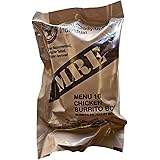Emergency Response Organizations
What They Offer
Emergency response organizations, like the Red Cross, provide a treasure trove of information and resources for preparing your disaster kit. They’ve got checklists, guidelines, and even training sessions that can help you know what you need to pack and how to use it.
These organizations often run workshops and community outreach programs to help individuals and families get prepared. I attended one myself, and it was incredibly enlightening. Plus, they usually offer some emergency supplies at these events.
The best part? This help is usually free or very low-cost. These organizations operate with the aim of keeping everyone safe, so they invest in educating the public about preparedness. You don’t have to navigate this alone when such rich resources are available.
Trusted Source of Information
One of the perks of turning to emergency response organizations is their credibility. These organizations have been around for decades, sometimes even longer, and they have a proven record of aiding people during crises. You can trust the information they provide will be accurate and effective.
Because they work closely with local and federal government agencies, they are always in the loop with the latest disaster readiness strategies. So, the advice you’re getting is up-to-date with the latest best practices.
Relying on them gives you peace of mind, knowing you’re getting your information from a place that truly understands emergencies. This will keep you and your family safer in the long run.
Hands-on Assistance
I’ve found that these organizations also offer hands-on help, which can be a game-changer if you’re unsure about how to start. They can guide you through the whole process, from making the kit to creating an action plan.
You can often find volunteers who are willing to walk you through packing your kit, step-by-step. Some organizations even offer mobile apps to help you track what you need and what you already have.
== > What if ... Get a FREE Subscription to PREPARE
Don’t underestimate the value of this practical, hands-on assistance. It’s one thing to read about preparedness, but it’s another thing entirely to have someone show you how to get it done.
Local Government Agencies
Accessing Resources
Local government agencies are another excellent source of help. They often provide resources such as downloadable checklists, guides, and even sometimes distribute basic disaster supply kits to residents.
Getting access to these resources is usually pretty straightforward. Check your city’s official website or contact your local public safety office. They have a plethora of useful information specifically tailored to your area’s unique risks and needs.
When my local city hall held a preparedness fair, I went, and it was eye-opening. They distributed free kits and provided a wealth of information that was immediately useful. I strongly recommend attending such local events.
Training and Workshops
Many local government agencies also put on training sessions and workshops. These are incredibly valuable opportunities to learn directly from the experts. They often cover everything from the basics of kit creation to more advanced topics like first aid and evacuation planning.
When I attended one of these workshops, I learned essential skills I wouldn’t have even thought about. It’s one thing to have a kit but another to know how to use everything in it effectively.
These training sessions are typically offered for free or at a nominal cost. Definitely keep an eye out for these opportunities—trust me, they’re worth it.
Customized Information
The beauty of working with your local government agencies is that they provide localized and customized information. Depending on where you live, different types of disasters might be more prevalent, and local agencies know exactly what you need.
For instance, if you live in an area prone to hurricanes but not earthquakes, the advice you receive will be tailored to that specific risk. This level of detail ensures that your kit—and your overall preparedness—is as effective as possible.
When I reached out to my local agency, they provided a booklet that outlined everything relevant to our urban area. It was incredibly targeted and useful.
Community Groups and Volunteers
Local Support Networks
Community groups and volunteers are another fantastic resource when you’re putting together a disaster preparedness kit. These groups, like neighborhood associations or local non-profits, often have their own initiatives geared towards preparedness.
Connecting with these groups can put you in touch with a supportive network of people committed to staying prepared. You can share tips, resources, and even hold each other accountable to ensure everyone gets their kits together.
Once, I joined a local community preparedness group, and it made the process not just manageable, but enjoyable. We had monthly meetings and shared updates on our progress. It felt good to be part of a community effort.
Educational Events
These community groups often host educational events that are incredibly beneficial. Whether it’s a seminar on emergency first aid or a workshop on what to include in your disaster kit, these events offer practical, hands-on learning.
These events are usually informal and very welcoming. I always found that I could ask questions without feeling out of place. The level of camaraderie and support in community groups is unparalleled.
I’ve met long-lasting friends through these events, and it’s comforting to know you have a network to lean on, especially during emergencies.
Collaboration and Skill Sharing
One of the vital aspects of community groups is the opportunity for collaboration and skill-sharing. People come from all walks of life, and everyone brings different expertise to the table. It’s a rich, collaborative environment where you can learn a lot.
For instance, in my group, one of the members was a nurse. She offered first aid training sessions which were a lifesaver—literally and figuratively. Another member was an outdoorsman who gave us tips on survival skills.
This collaboration enriches your preparedness in ways you might not achieve alone. So definitely consider tapping into your local community for support.
Professional Preparedness Consultants
Personalized Assistance
If you’ve got the budget for it, hiring a professional preparedness consultant can be a worthy investment. These experts offer personalized assistance and can help you create a disaster preparedness kit tailored to your specific needs.
When I hired a consultant, the experience was fantastic. The consultant came to my home, assessed my space, and helped me develop a comprehensive disaster plan. It was incredibly detailed and specific to my family’s needs.
This level of personalized service ensures that you’re not missing anything crucial and that your kit is optimized for your circumstances.
Expert Advice
Professional consultants come with a vast reservoir of knowledge. They stay updated with the latest in disaster preparedness and can offer insights that you might not find in general guides and checklists.
They often have real-world experience, having responded to various disasters, which means they understand practical applications of preparedness beyond just theoretical knowledge.
The consultant I worked with had a background in emergency management, and her advice was invaluable. She helped me identify gaps in my plan that I hadn’t even considered.
Follow-Up and Support
One of the significant advantages of hiring a consultant is the ongoing follow-up and support. Unlike one-off workshops or seminars, a consultant can offer continued guidance, adjustment of your plan, and refresher courses.
My consultant provided periodic check-ins to ensure my kit was up-to-date and that I hadn’t overlooked maintenance tasks like checking expiration dates on food and medical supplies.
This ongoing support can be very reassuring, as preparedness is not just a one-time activity but an ongoing process. A consultant helps you stay on top of it.
FAQs
What should I include in my disaster preparedness kit?
Your kit should include water, non-perishable food, a first-aid kit, medications, important documents, a flashlight, batteries, and other personal items like clothing and hygiene products. Tailor it to your specific needs and those of your family.
How often should I update my disaster preparedness kit?
It’s a good idea to check your kit every six months. Look for expired items, especially food and medications, and replace them. Also, consider any changes in your family’s needs, like new prescriptions or additional items for a new home or location.
How much water should I store in my disaster kit?
The general recommendation is to have one gallon of water per person per day for at least three days. This covers drinking and sanitation needs. Adjust according to your specific situation and storage capacity.
Can I get help from more than one source?
Absolutely! Using multiple resources can give you a more comprehensive approach to preparedness. Combining tips from government agencies, community groups, and professional consultants can ensure you’re well-prepared for any situation.






